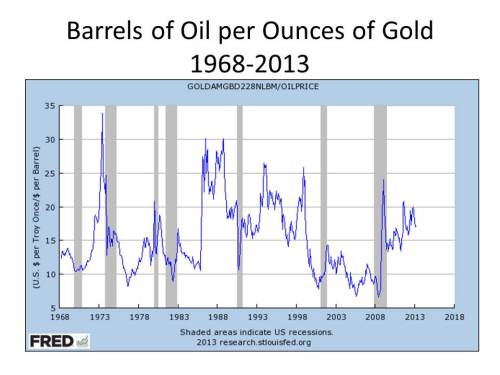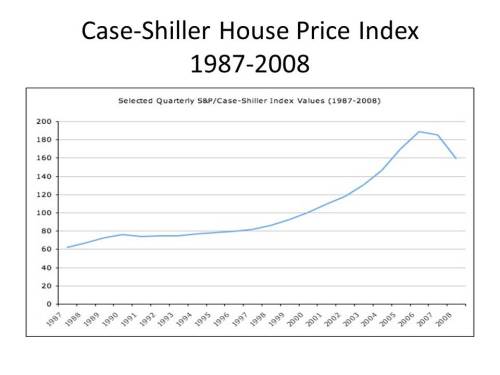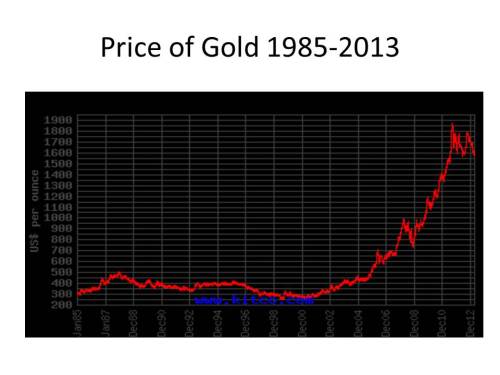Mention the name Ralph Hawtrey to most economists, even, I daresay to most monetary economists, and you are unlikely to get much more than a blank stare. Some might recognize the name because of it is associated with Keynes, but few are likely to be able to cite any particular achievement or contribution for which he is remembered or worth remembering. Actually, your best chance of eliciting a response about Hawtrey might be to pose your query to an acolyte of Austrian Business Cycle theory, for whom Hawtrey frequently serves as a foil, because of his belief that central banks ought to implement a policy of price-level (actually wage-level) stabilization to dampen the business cycle, Murray Rothbard having described him as “one of the evil genius of the 1920s” (right up there, no doubt, with the likes of Lenin, Trotsky, Stalin and Mussolini). But if, despite the odds, you found someone who knew something about Hawtrey, there’s a good chance that it would be for his articulation of what has come to be known as the “Treasury View.”
The Treasury View was a position articulated in 1929 by Winston Churchill, then Chancellor of the Exchequer in the Conservative government headed by Stanley Baldwin, in a speech to the House of Commons opposing proposals by Lloyd George and the Liberals, supported notably by Keynes, to increase government spending on public-works projects as a way of re-employing the unemployed. Churchill invoked the “orthodox Treasury View” that spending on public works would simply divert an equal amount of private spending on other investment projects or consumption. Spending on public-works projects was justified if and only if the rate of return over cost from those projects was judged to be greater than the rate of return over cost from alternative private spending; public works spending could not be justified as a means by which to put the unemployed back to work. The theoretical basis for this position was an article published by Hawtrey in 1925 “Public Expenditure and the Demand for Labour.”
Exactly how Hawtrey’s position first articulated in a professional economics journal four years earlier became the orthodox Treasury View in March 1929 is far from clear. Alan Gaukroger in his doctoral dissertation on Hawtrey’s career at the Treasury provides much helpful background information. Apparently, Hawtrey’s position was elevated into the “orthodox Treasury View” because Churchill required some authority on which to rely in opposing Liberal agitation for public-works spending which the Conservative government and Churchill’s top Treasury advisers and the Bank of England did not want to adopt for a variety of reason. The “orthodox Treasury View” provided a convenient and respectable doctrinal cover with which to clothe their largely political opposition to public-works spending. This is not to say that Churchill and his advisers were insincere in taking the position that they did, merely that Churchill’s position emerged from on-the-spot political improvisation in the course of which Hawtrey’s paper was dredged up from obscurity rather than from applying any long-standing, well-established, Treasury doctrine. For an illuminating discussion of all this, see chapter 5 (pp. 234-75) of Gaukroger’s dissertation.
I have seen references to the Treasury View for a very long time, probably no later than my first year in graduate school, but until a week or two ago, I had never actually read Hawtrey’s 1925 paper. Brad Delong, who has waged a bit of a campaign against the Treasury View on his blog as part of his larger war against opponents of President Obama’s stimulus program, once left a comment on a post of mine about Hawtrey’s explanation of the Great Depression, asking whether I would defend Hawtrey’s position that public-works spending would not increase employment. I think I responded by pleading ignorance of what Hawtrey had actually said in his 1925 article, but that Hawtrey’s explanation of the Great Depression was theoretically independent of his position about whether public-works spending could increase employment. So in a sense, this post is partly belated reply to Delong’s query.
The first thing to say about Hawtrey’s paper is that it’s hard to understand. Hawtrey is usually a very clear expositor of his ideas, but sometimes I just can’t figure out what he means. His introductory discussion of A. C. Pigou’s position on the wisdom of concentrating spending on public works in years of trade depression was largely incomprehensible to me, but it is worth reading, nevertheless, for the following commentary on a passage from Pigou’s Wealth and Welfare in which Pigou proposed to “pass behind the distorting veil of money.”
Perhaps if Professsor Pigou had carried the argument so far, he would have become convinced that the distorting veil of money cannot be put aside. As well might he play lawn tennis without the distorting veil of the net. All the skill and all the energy emanate from the players and are transmitted through the racket to the balls. The net does nothing; it is a mere limiting condition. So is money.
Employment is given by producers. They produce in response to an effective demand for products. Effective demand means ultimately money, offered by consumers in the market.
A wonderful insight, marvelously phrased, but I can’t really tell, beyond Pigou’s desire to ignore the “distorting veil of money,” how it relates to anything Pigou wrote. At any rate, from here Hawtrey proceeds to his substantive argument, positing “a community in which there is unemployment.” In other words, “at the existing level of prices and wages, the consumers’ outlay [Hawtrey’s term for total spending] is sufficient only to employ a part of the productive resources of the country.” Beyond the bare statement that spending is insufficient to employ all resources at current prices, no deeper cause of unemployment is provided. The problem Hawtrey is going to address is what happens if the government borrows money to spend on new public works?
Hawtrey starts by assuming that the government borrows from private individuals (rather than from the central bank), allowing Hawtrey to take the quantity of money to be constant through the entire exercise, a crucial assumption. The funds that the government borrows therefore come either from that portion of consumer income that would have been saved, in which case they are not available to be spent on whatever private investment projects they would otherwise have financed, or they are taken from idle balances held by the public (the “unspent margin” in Hawtrey’s terminology). If the borrowed funds are obtained from cash held by the public, Hawtrey argues that the public will gradually reduce spending in order to restore their cash holdings to their normal level. Thus, either way, increased government spending financed by borrowing must be offset by a corresponding reduction in private spending. Nor does Hawtrey concede that there will necessarily be a temporary increase in spending, because the public may curtail expenditures to build up their cash balances in anticipation of lending to the government. Moreover, there is always an immediate effect on income from any form of spending (Hawtrey understood the idea of a multiplier effect, having relied on it in his explanation of how an increase in the stock of inventories held by traders in response to a cut in interest rates would produce a cumulative increase in total income and spending), so if government spending on public works reduces spending elsewhere, there is no necessary net increase in total spending even in the short run. Here is how Hawtrey sums up the crux of his argument.
To show why this does not happen, we must go back to consider the hypothesis with which we started. We assumed that no additional bank credits are created. It follows that there is no increase in the supply of the means of payment. As soon as the people employed on the new public works begin to receive payment, they will begin to accumulate cash balances and bank balances. Their balances can only be provided at the expense of the people already receiving incomes. These latter will therefore become short of ready cash and will curtail their expenditures with a view to restoring their balances. An individual can increase his balance by curtailing his expenditure, but if the unspent margin (that is to say, the total of all cash balances and bank balances) remains unchanged, he can only increase his balance at the expense of those of his neighbours. If all simultaneously try to increase their balances, they try in vain. The effect can only be that sales of goods are diminished, and the consumers’ income is reduced as much as the consumers’ outlay. In the end the normal proportion between the consumers’ income and the unspent margin is restored, not by an increase in balances, but by a decrease in incomes. It is this limitation of the unspent margin that really prevents the new Government expenditure from creating employment. (pp. 41-42)
Stated in these terms, the argument suggests another possible mechanism by which government expenditure could increase total income and employment: an increase in velocity. And Hawtrey explicitly recognized it.
There is, however, one possibility which would in certain conditions make the Government operations the means of a real increase in the rapidity of circulation. In a period of depression the rapidity of circulation is low, because people cannot find profitable outlets for their surplus funds and they accumulate idle balances. If the Government comes forward with an attractive gild-edged loan, it may raise money, not merely by taking the place of other possible capital issues, but by securing money that would otherwise have remained idle in balances. (pp. 42-43)
In other words, Hawtrey did indeed recognize the problem of a zero lower bound (in later works he called it a “credit deadlock”) in which the return to holding money exceeds the expected return from holding real capital assets, and that, in such circumstances, government spending could cause aggregate spending and income to increase.
Having established that, absent any increase in cash balances, government spending would have stimulative effects only at the zero lower bound, Hawtrey proceeded to analyze the case in which government spending increased along with an increase in cash balances.
In the simple case where the Government finances its operations by the creation of bank credits, there is no diminution in the consumers’ outlay to set against the new expenditure. It is not necessary for the whole of the expenditure to be so financed. All that is required is a sufficient increase in bank credits to supply balances of cash and credit for those engaged in the new enterprise, without diminishing the balances held by the rest of the community. . . . If the new works are financed by the creation of bank credits, they will give additional employment. (p. 43)
After making this concession, however, Hawtrey added a qualification, which has provoked the outrage of many Keynesians.
What has been shown is that expenditure on public works, if accompanied by a creation of credit, will give employment. But then the same reasoning shows that a creation of credit unaccompanied by any expenditure on public works would be equally effective in giving employment.
The public works are merely a piece of ritual, convenient to people who want to be able to say that they are doing something, but otherwise irrelevant. To stimulate an expansion of credit is usually only too easy. To resort for the purpose to the construction of expensive public works is to burn down the house for the sake of the roast pig.
That applies to the case where the works are financed by credit creation. In the practical application of the policy, however, this part of the programme is omitted. The works are started by the Government at the very moment when the central bank is doing all it can to prevent credit from expanding. The Chinaman burns down his house in emulation of his neighbour’s meal of roast pork, but omits the pig.
Keynesians are no doubt offended by the dismissive reference to public-works spending as “a piece of ritual.” But it is worth recalling the context in which Hawtrey published his paper in 1925 (read to the Economics Club on February 10). Britain was then in the final stages of restoring the prewar dollar-sterling parity in anticipation of formally reestablishing gold convertibility and the gold standard. In order to accomplish this goal, the Bank of England raised its bank rate to 5%, even though unemployment was still over 10%. Indeed, Hawtrey did favor going back on the gold standard, but not at any cost. His view was that the central position of London in international trade meant that the Bank of England had leeway to set its bank rate, and other central banks would adjust their rates to the bank rate in London. Hawtrey may or may not have been correct in assessing the extent of the discretionary power of the Bank of England to set its bank rate. But given his expansive view of the power of the Bank of England, it made no sense to Hawtrey that the Bank of England was setting its bank rate at 5% (historically a rate characterizing periods of “dear money” as Hawtrey demonstrated subsequently in his Century of Bank Rate) in order to reduce total spending, thereby inducing an inflow of gold, while the Government simultaneously initiated public-works spending to reduce unemployment. The unemployment was attributable to the restriction of spending caused by the high bank rate, so the obvious, and most effective, remedy for unemployment was a reduced bank rate, thereby inducing an automatic increase in spending. Given his view of the powers of the Bank of England, Hawtrey felt that the gold standard would take care of itself. But even if he was wrong, he did not feel that restoring the gold standard was worth the required contraction of spending and employment.
From the standpoint of pure monetary analysis, notwithstanding all the bad press that the “Treasury View” has received, there is very little on which to fault the paper that gave birth to the “Treasury View.”


